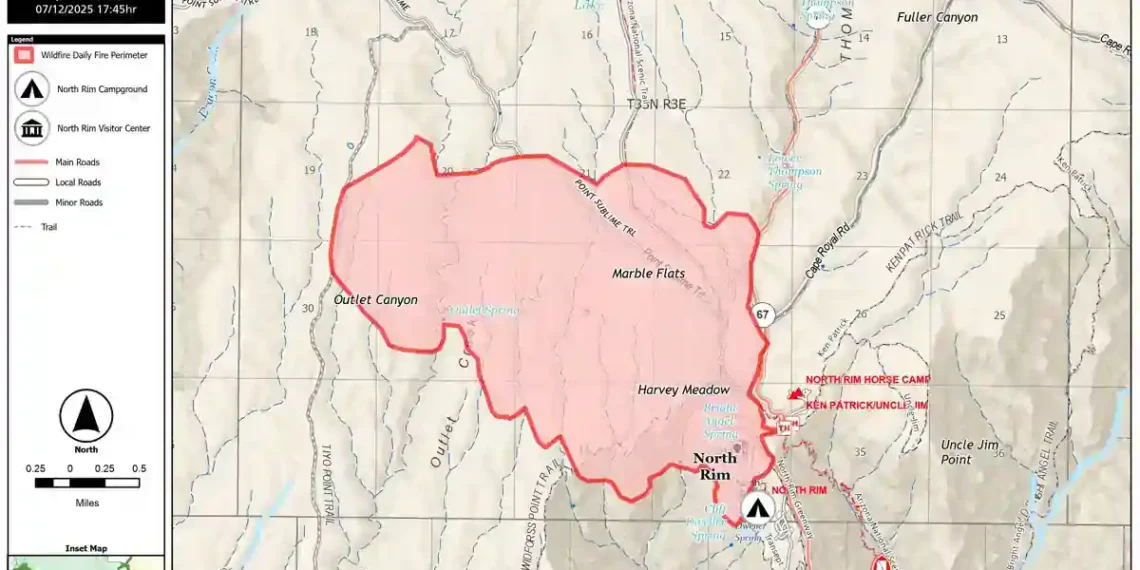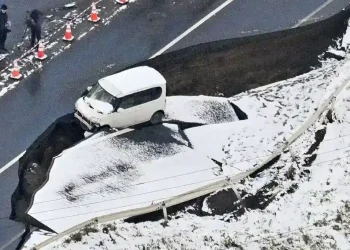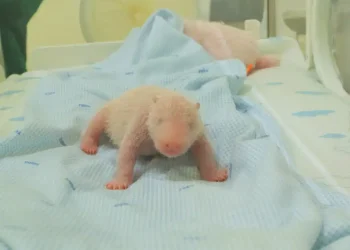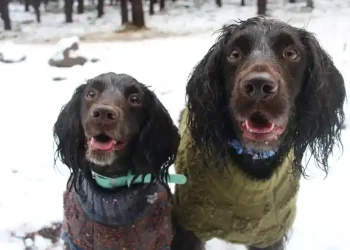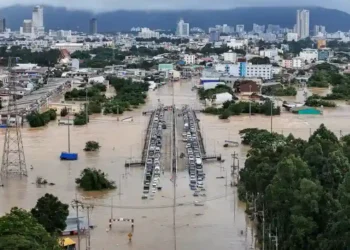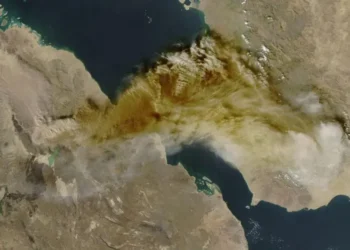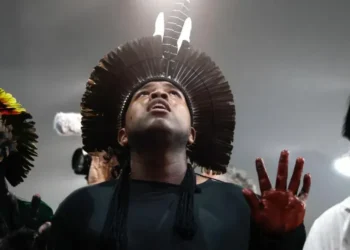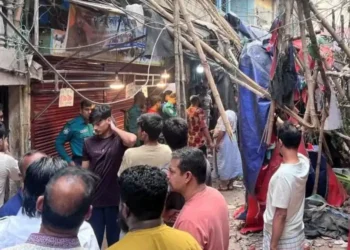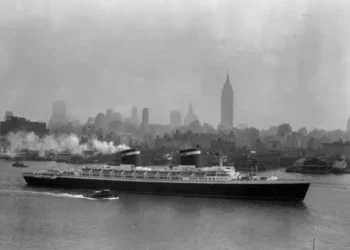Destruction on the Rim: Dragon Bravo Fire Destroys Grand Canyon Lodge and Reshapes 2025 Season
By Journos News Staff | July 14, 2025
The Grand Canyon’s North Rim, known for its serenity, sweeping vistas, and historic lodge, has been thrust into crisis. Over the weekend, a fast-moving wildfire known as the Dragon Bravo Fire surged through developed areas of Grand Canyon National Park, completely destroying the Grand Canyon Lodge, a beloved heritage structure dating back to 1928.
What began as a remote blaze has now prompted the closure of the North Rim for the rest of the 2025 season, with dozens of structures lost and key hiking corridors sealed indefinitely.
How the Fire Escalated: A Night of Chaos
At approximately 10:30 p.m. on July 12, fire crews reported a sudden and intense escalation. Fueled by 20 mph winds and gusts reaching 40 mph, the Dragon Bravo Fire rapidly expanded by 500 acres overnight, breaching containment efforts and encroaching on historic park facilities.
Fire behavior was described by officials as “extreme and volatile,” conditions made worse by triple-digit heat, low humidity, and difficult terrain. Despite aggressive overnight firefighting efforts, the flames overtook the Grand Canyon Lodge and surrounding cabins, leaving behind a field of rubble and ash.
Grand Canyon Lodge: A Historic Loss
The destruction of the Grand Canyon Lodge is a significant cultural and historical blow to the National Park Service and the millions who’ve visited the North Rim. Built by the Union Pacific Railroad as part of its push to bring tourism to the American Southwest, the lodge was designated a National Historic Landmark for its rustic architecture and irreplaceable views of the canyon’s northern escarpments.
Located at over 8,000 feet elevation and far less visited than the South Rim, the North Rim has long offered a quieter, more intimate Grand Canyon experience. The lodge was its crown jewel—until now.
Hazardous Conditions: Chlorine Leak Halts Aerial Retardant Drops
As the fire intensified, firefighters launched aerial water bucket operations to protect the remaining structures near Transept Canyon and the lodge. However, a dangerous wrinkle complicated efforts: the fire damaged the North Rim water treatment facility, resulting in a chlorine gas leak that forced firefighting crews to retreat from several key areas.
The presence of toxic gas rendered retardant drops by fixed-wing aircraft unsafe, limiting the tools available to contain the blaze during the fire’s most aggressive phase.
Extent of the Damage: Dozens of Structures Lost
Preliminary damage assessments indicate that between 50 and 80 structures have been destroyed, including NPS administrative offices, employee housing, and visitor facilities. Thanks to early evacuation orders, no injuries or fatalities have been reported. All park employees and seasonal residents were safely evacuated prior to the fire’s overnight expansion.
Officials have emphasized that the area remains extremely dangerous, with continued risk to responders and infrastructure.
Mass Closures: Inner-Canyon Trails and Ranches Off-Limits
In response to the fire’s unpredictable behavior, the National Park Service has implemented a sweeping closure of all North Rim operations for the remainder of the 2025 season.
In addition to the lodge and local roads, this includes closures to major hiking and camping corridors across the inner canyon, affecting visitors on both the North and South Rims. Closed areas include:
- North Kaibab Trail
- South Kaibab Trail
- Bright Angel Trail (below Havasupai Gardens)
- Phantom Ranch
- Inner canyon campgrounds and resthouses
The impact will be felt by both backcountry hikers and commercial outfitters, many of whom plan trips months in advance. No timeline has been offered for reopening.
Aggressive Suppression Strategy Underway
The National Park Service and interagency fire crews are employing a full suppression strategy, meaning the goal is to contain and extinguish the fire rather than allowing it to burn naturally. This is often the approach in developed areas, particularly those with high visitor use or cultural resources at risk.
On July 13, crews began ordering retardant drops east of the developed area, targeting the Roaring Springs drainage, a critical source of water for the North Rim and Phantom Ranch. The ongoing goal is to:
- Protect the lives and safety of firefighters and the public
- Preserve remaining infrastructure on the North Rim
- Safeguard the park’s cultural and ecological assets
Fire in a Warming World: A Growing Threat to National Parks
The Dragon Bravo Fire is the latest in a growing trend of intense wildfires impacting the American West, and particularly national parks once considered relatively insulated by geography. Hotter, drier conditions—fueled by climate change—are expanding the length and intensity of fire seasons across the region.
In the last decade, wildfires have affected Yosemite, Glacier, Yellowstone, and now Grand Canyon. As more historic structures fall to flames, questions are mounting over whether infrastructure and fire management systems are adapting fast enough.
What Visitors Need to Know
The South Rim remains open, including the Grand Canyon Visitor Center, Mather Campground, and Desert View Watchtower. However, travelers are strongly urged to check real-time updates from the National Park Service before planning a visit, as smoke conditions and fire operations may lead to additional disruptions.
For those planning backcountry trips or visits to Phantom Ranch in the coming months, refunds and rebooking options are expected to be made available soon.
Looking Ahead
As firefighters continue to battle the Dragon Bravo Fire under punishing conditions, recovery will take months, if not years. The Grand Canyon Lodge, an irreplaceable piece of park history, is gone—but the effort to protect what remains is far from over.
The North Rim is closed for now, but its story is still being written—one of resilience, stewardship, and the enduring challenge of preserving America’s natural treasures in a time of change.
This article was rewritten by JournosNews.com based on verified reporting from trusted sources. The content has been independently reviewed, fact-checked, and edited for accuracy, neutrality, tone, and global readability in accordance with Google News and AdSense standards.
All opinions, quotes, or statements from contributors, experts, or sourced organizations do not necessarily reflect the views of JournosNews.com. JournosNews.com maintains full editorial independence from any external funders, sponsors, or organizations.
Stay informed with JournosNews.com — your trusted source for verified global reporting and in-depth analysis. Follow us on Google News, BlueSky, and X for real-time updates.
